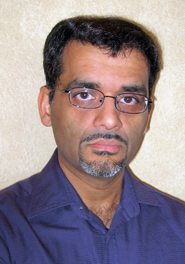Manoj Narang, the co-founder of high-frequency trader Tradeworx and a vocal defender of the much maligned practice of HFT has left his firm Tradeworx.

According to press reports from Bloomberg and Reuters, the 45 year-old Narang left the Red Bank, New Jersey-based trading firm and is mulling his options. There were differences of opinion and about the strategic direction of the company among the board, Narang told Bloomberg. It seemed like the right time after 15 years with the company. I wanted to eventually pursue other interests.”
Narang graced the cover of Traders in April 2014 to address allegations in Michael Lewis blockbuster Flash Boys that HFT firms were engaging in market rigging and cheating competing traders and investors. Narang did not pull his punches, when interviewed by Traders contributing editor Renee Caruthers when he called these allegations nonsense.
Narang takes issue with those front-running allegations on several counts. “First of all, front-running has a specific legal definition. It means giving your order more preference than a client’s order that you are entrusted to execute on their behalf,” he told Traders. A problem with applying that definition to HFT, he said, is that high-frequency traders don’t have clients. They are simply liquidity providers who are posting quotes without acting on anyone else’s behalf.
But more importantly, Narang argues that the HFT behavior that its detractors are taking aim at is simply an example of trading following the basic rules of supply and demand. The charges against it show a lack of understanding of both the natural behavior of financial markets and the functionality of the technology that underpins it, he said.
In the same Traders profile, he added,
Narang maintains that high-frequency traders are simply playing the role that liquidity providers have always played in the market. The only difference is that in today’s markets, that role must be played at mind-boggling speeds.
“Even 30 years ago, people who were making market on exchanges traded with high frequency-they wanted to turn their inventory over as quickly as possible to try to capture as much of the bid-ask spread as they could,” Narang said. “Nothing has really changed except the extent that computers are involved in that business model.”
The Next Step
Bloomberg reports that Tradeworx has been among the biggest traders in U.S. equities, accounting for as much as 5 percent of daily volume, according to Narangs claims.
Bloomberg reports that Narang has yet to settle on his next stage in his career and life. I have a lot of different ideas. Many are in the financial services in some way and others are outside, he said. Right now Im taking my time meeting people. Im further refining my ideas and taking some time off. I think in another month or so, Ill have much better idea of the direction Ill go.




